Aldwell-Schachter Chapter 26
Click on a musical example for playback
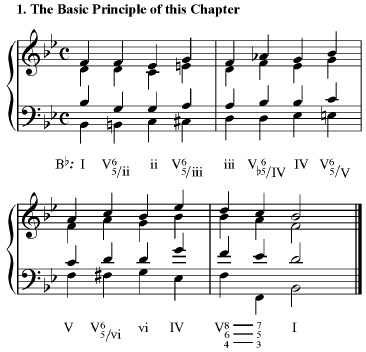
The essential message of Chapter 25 is this: any triad (that isn’t diminished or augmented) may be preceded by its own V (or inversion) or vii7 (or inversion). The idea is simple—the ramifications are many.
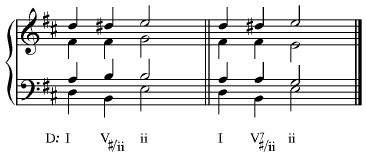
Here are some basic possibilities, moving from I to ii. In these two examples, ii is preceded by its own dominant
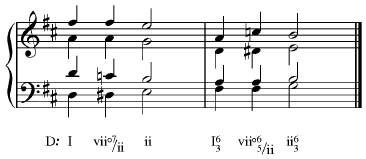
In these two examples, ii is preceded by its own vii7.
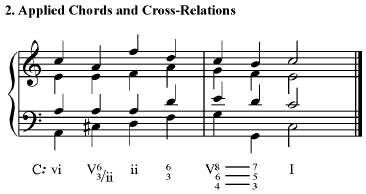
Applied chords carry with them the very real possibility of cross relations. Note in this example that there is a real jaw-breaker right at the beginning.
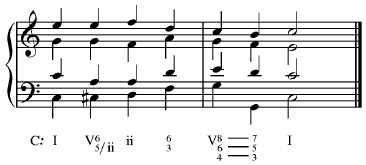
Just to remind you, usually the best way to avoid a cross-relation is to keep the chromatic motion exclusively in one voice.
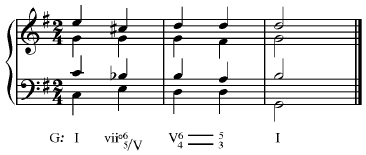
A cross-relation can work if it occurs as part of a chromaticized voice exchange, as shown here.
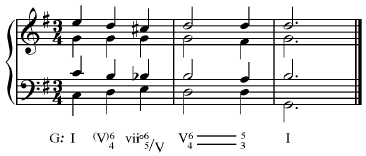
And it works even better if there is a passing chord between the two chords of the voice exchange.
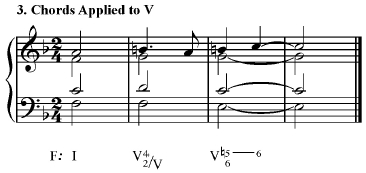
“Climb Ev’ry Mountain” is a good example of an applied V4/2 of V.
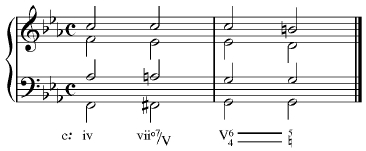
^4 raised in the bass creates vii7 of V—here moving to a cadential 6/4.
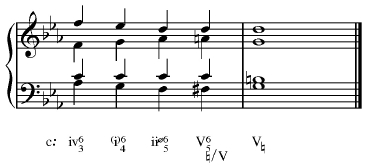
It’s fun to play some games with this stuff. Here, a ii6/5 becomes applied V6/5 just by some chromatic changes.
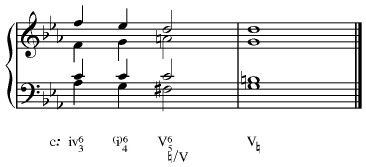
In fact, you could skip the ii6/5 altogether and go directly to the applied V6/5—it still works.
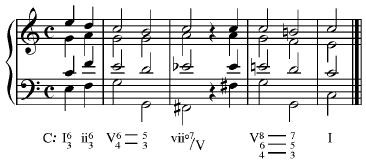
This is a kind of deceptive cadence, appearing as the goal of the cadential 6/4: instead of moving to vi, it moves to the vii7 of V. Then, behaving as a good deceptive cadence should do, it repeats the figure, this time resolving properly to I.
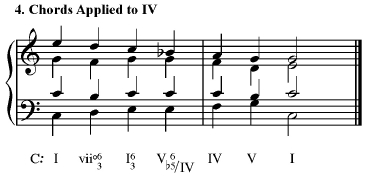
The tonic triad itself can be considered as applied V of IV, but to make the point it is necessary to use a seventh in the chord—which is lowered (thus it’s flat ^7.)
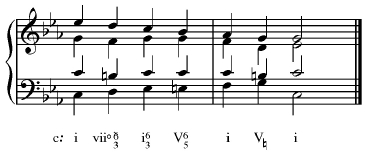
This works just fine in minor—but remember to raise ^3 to create a proper leading tone to IV.
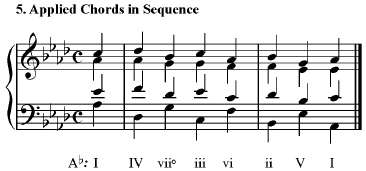
Let’s start with an old friend: a descending fifths sequence, everybody in root position.
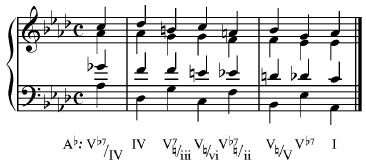
Note that the third chord in the sequence above (the beginning of the 2nd iteration) was a diminished triad and couldn’t be preceded by an applied chord. However, we can treat every chord in the progression as the V7 of the chord that follows it. (Aldwell-Schachter’s system of notating applied dominants is actually preferable here: that curved arrow means “dominant of the next chord”, and is really a lot clearer.)
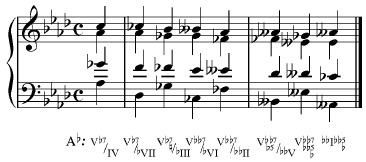
An attempt to get around the previous limitation by arranging all of the descending fifths to be all perfect—thus avoiding the diminished triad—results in that sinking feeling of a sequence that manages to modulate down a half step. If I start in Ab major, I wind up with the fascinating experience of a sequence which winds up in A Double-Flat Major.
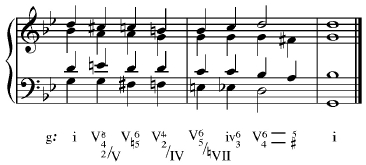
Chains of interlocking applied chords can be extremely effective. This example alternates 4/2 and 6/5 chords. Note that chord on the downbeat of measure 2 and its analysis—natural VII.
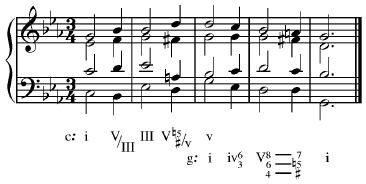
Something we haven’t seen before: a sequence rising in thirds. This sort of thing doesn’t work very well without applied chords. Note that I had to do some fancy footwork to avoid augmented seconds. Also note that this progression modulates to the minor dominant.
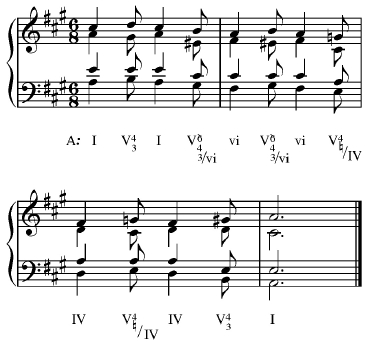
A descending thirds sequence, connected throughout by applied V4/3’s.